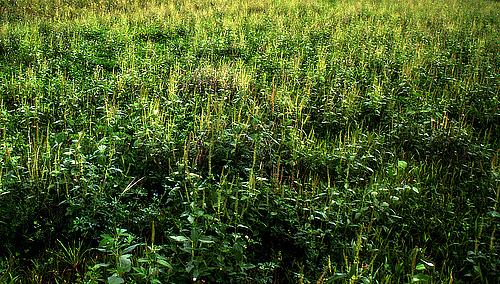Links to Climate Change and Longer, Stronger Allergy Seasons

Allergic disorders, including asthma and allergies, are debilitating and expensive. According to an article by the U.S. Global Change Research Program, they are one of the leading causes of chronic illness, affecting more than 50 million Americans and costing more than $20 billion annually.
Because of changing weather patters, allergy seasons are now longer. Pollens in ragweed are believed to have become more plentiful and noxious, which some researchers surmise is in response to increasing levels of carbon dioxide in the atmosphere. If current trends continue, these impacts and costs stand to grow in the coming decades as we dump more CO2in the atmosphere and the planet continues to heat up, according to a growing body of research.
One intriguing study done by U.S. Department of Agriculture scientists revealed that higher concentrations of carbon dioxide in the air stimulates plant growth and the carbon-enriched pollen— CO2 is, after all, a driver of photosynthesis—is more damaging because it contains more of the chemicals that cause allergic reactions.
The researchers planted weeds in downtown Baltimore, which is choked with smog and about three to four degrees warmer than the surrounding countryside because of the urban heat island effect (buildings and pavement absorb heat). CO2concentrations were 440 to 450 parts per million, which was considerably higher than the 399 ppm average of 2013 but came close to the conditions moderate climate change scenarios are predicting for the planet as a whole by the middle of this century.
For comparison, they planted the same weeds at two other sites: an organic farm in western Maryland, where growing conditions approximated pre-industrial CO2levels and temperature, and a park in a suburb of Baltimore, which presented the current circumstances. They made sure the seeds and the soil composition of the plant beds were the same so the only variables would be CO2concentration and temperature.
After five growing seasons, the weeds in the hotter CO2-enriched environment grew to nearly twice the size of plants on the farm—6 to 8 feet versus up to 12 feet in the city. Even worse, the chemical makeup of the CO2-enhanced weeds seemed to change, with the pollen they generated not only being four times as plentiful as that of their rural cousins, but also, having more of the protein responsible for allergic reactions. The researchers do note that the impact on human allergies of more protein in the plants “would be exceedingly difficult to predict. As noted previously, further clinical investigations are required to address these issues.”
The plants grown under conditions that simulated CO2levels that are projected by mid-century, allergens rose by 60 percent. Carbon dioxide is a food source for plants, which convert it into sugars and carbohydrates. But not all plants respond the same way, and noxious weeds—as well as vines like poison ivy and kudzu—react much more strongly to higher CO2than other types of plants do, Lewis Ziska, a USDA plant physiologist who led this research team, told me when I interviewed him for my book, Fevered. As a consequence, we see not only more growth, but also potentially more virulent chemicals within the plants.
A 2011 study that Ziska collaborated on with 20 other mostly US-based researchers had even more bad news for the nation’s hay fever sufferers. In an analysis of U.S. and Canadian data on ragweed and daily temperatures at 10 different latitudes, from East Texas to Saskatoon, Canada, scientists found that pollen seasons were up to 27 days longer than in 1995 in the northernmost areas, where temperatures are rising the fastest in response to climate change. The lengthening of the pollen season was directly correlated to the hotter weather because the frost is melting earlier in the year and it stays warm longer, researchers noted.
“This confirms what we already know,” Ziska told me, “namely that we’re seeing a greater amount of warming as we move towards the poles.”
More recent research indicates that within the next three decades, pollen counts could more than double, according to a study presented by Leonard Bielory, M.D., at the 2012 scientific meeting of the American College of Allergy, Asthma and Immunology. Bielory is part of a research team at Rutgers University in New Jersey that is studying the effects of climate changes on allergenic plants grown in climate-controlled chambers. Using computer modeling techniques that incorporated factors like changes in weather patterns, precipitation and temperature that are anticipated as the planet heats up, they projected that by 2040, pollen counts will average 21,735, up from 8,455 in the year 2000, and the allergy season will begin earlier each year, too.
“When we look at climate change, we think of it as this esoteric thing that will happen to our grandkids,” says the USDA’s Lewis Ziska. “But what this research shows is that it is already happening and it’s affecting us right now.”
Linda Marsa's book FEVERED is now available wherever books and e-books are sold.
Image by pawpaw67 via Flickr

